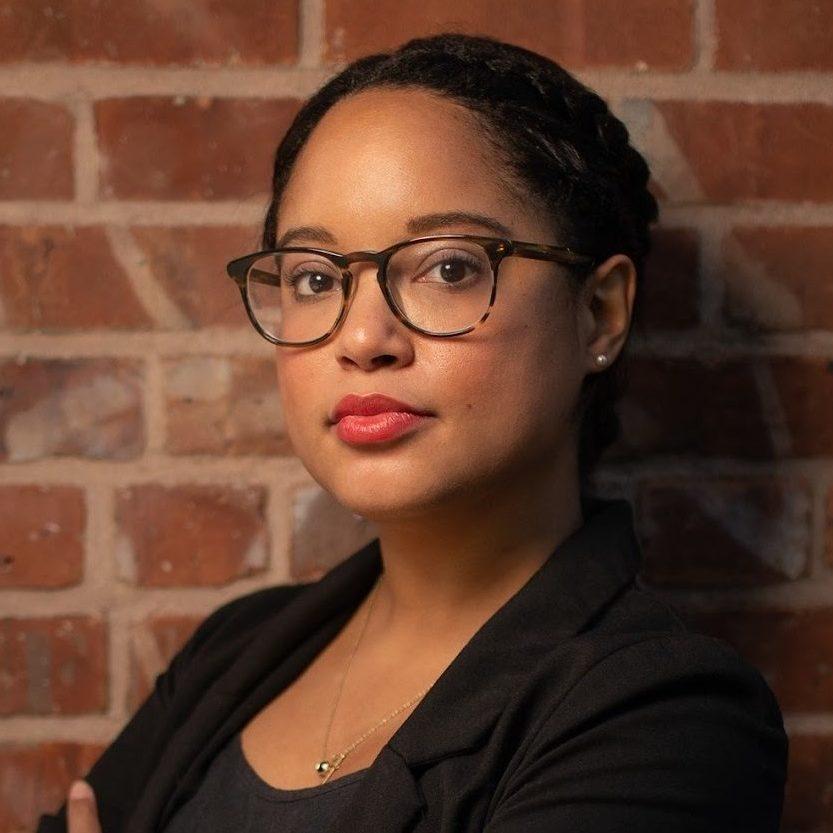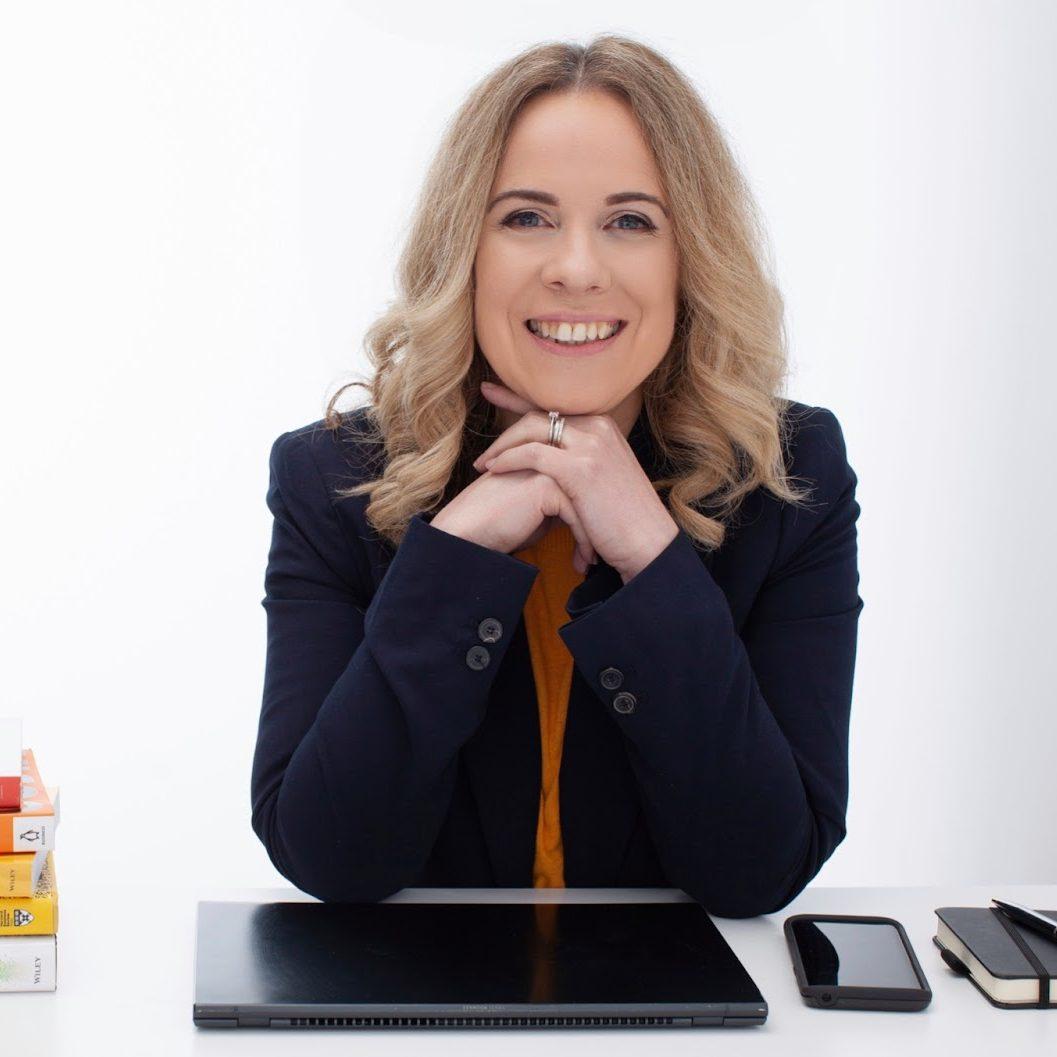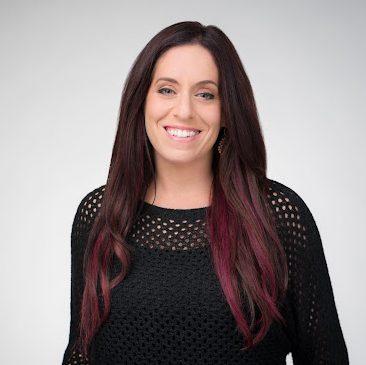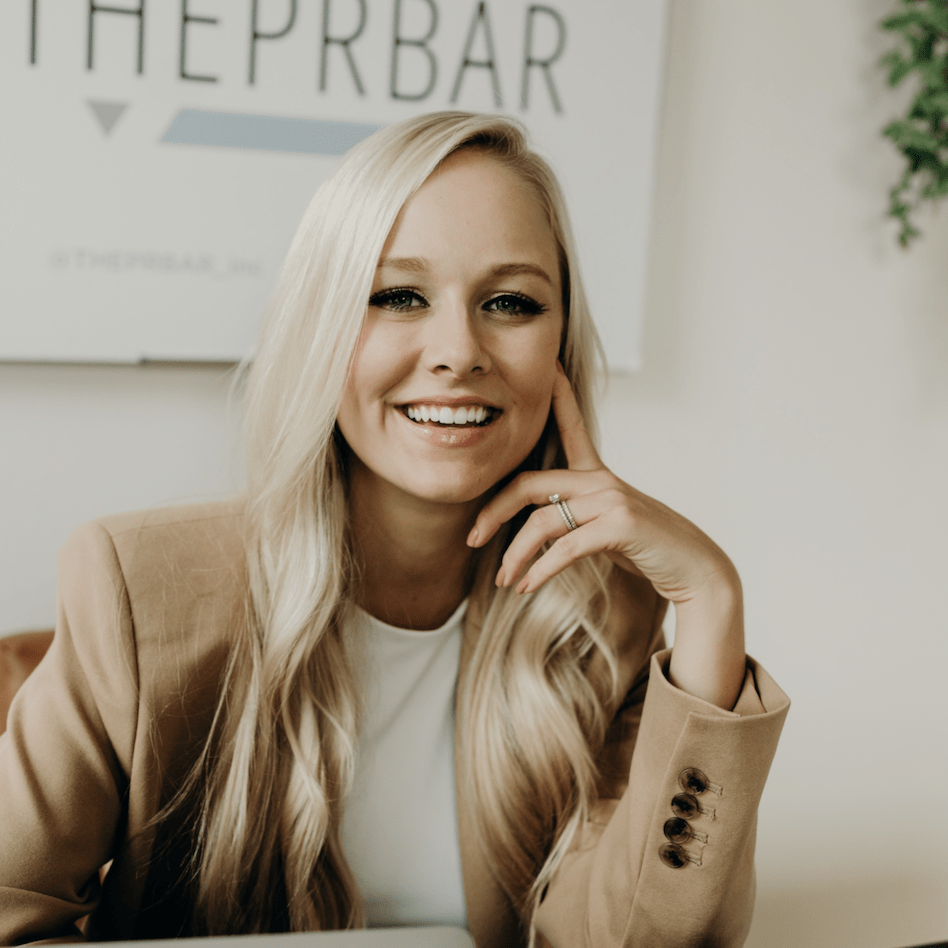The Crunchbase “Female Leader Series” is comprised of stories, Q&As and thought-leadership pieces from glass-ceiling-smashers who overcame the odds and are now leading successful companies.
Marketing and branding can be make or break when it comes to coveted business growth. However, with new trends, strategies and technology emerging left and right, it can be hard for startups to keep up—and know where to invest their precious runway.
To ensure you and your team are not just crossing your fingers for success, we tapped into the expertise of 17 marketing and branding experts from the Dreamers & Doers collective to learn about the most impactful strategies they’ve leveraged for themselves and their clients.
Take a page from these experts’ playbooks to ensure your company is on a path toward growth and success this year and beyond.
Kaitlyn Lo
Co-founder of Just Enough Wines, a woman-founded premium canned wine brand based in San Francisco.


My No. 1 strategy: One of the most effective marketing tactics startups can leverage to grow is more personalized and targeted email marketing. We’ve found it is incredibly important to take the time to understand who our customers are and the different products they are interested in to ensure we’re able to serve them more relevant content that pertains to their wants and needs.
The results I’ve seen: We’ve seen our open rate increase by 44 percent and our revenue generated from email increase by 50 percent.
Alice Kim
Founder and CEO of PerfectDD, a mission-driven sustainable clothing brand designed to fit and flatter DD+ cups, sizes 0-14.
My No. 1 strategy: The most effective marketing strategy is authenticity, whether it’s via video, photo or brand voice. People seek honesty and relatability. They want to know why you started your brand or created your product, and look for “real” customer reviews. No longer are customers seeking the picture-perfect, photoshopped ads and paid reviews. I love this shift because as a small business, we can share our message without fancy equipment or a lot of money.
The results I’ve seen: I’ve seen customer loyalty increase, with more than 60 percent of customers purchasing more than two items and a return rate in single digits versus the double-digit apparel e-commerce industry average.
Marissa Shapiro
Founder of Martha, a company that builds brands from the inside out.


My No. 1 strategy: A tactic that’s always effective for businesses, regardless of industry or audience, is strategically defining the brand’s position. The positioning determines the emotional place the brand should hold in the mind of the target audience. It really should be the starting line for every brand.
The results I’ve seen: One of the greatest returns on investing in positioning is the impact it has internally. From site copy and packaging to social posts and brand partnerships, everything becomes more intentional. I consistently find that intentional brands receive higher engagement from their audience.
Folake Dosu
Founder of Trivia for the Culture, which hosts Black pop culture-focused team trivia events for companies and organizations.
My No. 1 strategy: Think niche when it comes to audience development. Research online and offline communities where your audience thrives. Prioritize relationship-building within these communities to gain insight into your audience’s pain points and desires.
The results I’ve seen: For my launch strategy I focused on hosting free events for communities with influencers and decision-makers in my target audience. This approach has been a reliable referral driver.
Muirelle Montecalvo
Founder and CEO of Vacayou Wellness Travel, a content and booking platform exclusively for wellness and active travel.


My No. 1 strategy: Using LinkedIn as a networking tool and commenting on articles of interest, sharing interesting posts and conversing with other users can be an excellent marketing and branding tool depending on your audience.
The results I’ve seen: We have seen tremendous traffic growth through our inspirational posts on Instagram and Facebook, and most importantly, we’ve provided interesting content in our online magazine.
Kristyn Potter
Founder of Left Bank Media, which surfaces the work of artists, creatives and entrepreneurs on an international scale.


My No. 1 strategy: Be transparent and let meaningful social and environmental initiatives drive business decisions. From Black Lives Matter to the pandemic, we are seeing a major shift in how companies engage in business, who they partner with, and what purpose they serve. Leading with true, non-performative integrity is what will help you build a timeless brand and make an impact along the way.
The results I’ve seen: From big-name platform partners and press to an influx of investor interest, I can confidently say that what we do and who we serve matters—and other people take notice. The businesses we choose to represent and partner with through our in-house agency are constantly evolving their sustainable practices, diversity initiatives, and nonprofit and charitable ideas.
Allison McGuire
Founder and CEO of The McGuire Method, which aims to ignite powerful communication skills through acting techniques.


My No. 1 strategy: Focus on your audience’s problems, not yours. As a communications coach, my work is imbuing confidence in others to present authentically. When I reframed my email marketing and social media posts to address my audience’s insecurities and struggles, engagement skyrocketed and my pipeline grew exponentially.
The results I’ve seen: My clients and audience felt seen and heard. Not only did I receive notes from people who related, I also heard feedback such as, “Because you told me to ask for a specific number, I ended up getting triple what I thought I could’ve!”
Jolene Delisle
Founder of The Working Assembly, a branding and creative agency collaborating with emerging and evolving brands.


My No. 1 strategy: Shift the brand and customer relationship from transactional to emotional. Create a reason why, despite price or competition, you create loyal customers who love your brand and are excited to recommend it and empowered to make it their own. This means defining your brand voice, being consistent with your visual story, and fostering your brand’s personality as if it was a living, breathing entity.
The results I’ve seen: Brands who create a strategic framework that allows for them to be emotional, empathetic and engaging will always be more successful. It means you’re allowing your customers to participate and react, and you are able to listen and respond. It’s how we all want to be engaged as people. It’s within our nature to want to feel important and heard, and be activated.
Kimberly Brizzolara
Founder of Brands That Get You, a co-creative agency that works one-on-one with passionate founding teams to build brands that get audiences product obsessed.


My No. 1 strategy: In 2022, consumers are actively looking for causes and ideas to rally around. So, give your brand a nemesis: the Moriarty to your Holmes; the Voldemort to your Potter; the Newman to your Seinfeld. Your nemesis can be an industry’s standard you want to change or anything else that feels important for your brand to vanquish. Then, think about all of your brand’s actions—both internal and external—as a fight against this nemesis.
The results I’ve seen: Brands that keep a clear and compelling enemy in their sights are engaging loyal armies of fans. Two brands I’ve created in the past year have seen immediate returns with fast-growing customer bases, high PR visibility and business backing from both prestigious venture firms and sought-after accelerator programs.
Margo Mulvihill
Founder of Where Digital Goes, a marketing agency focused on using social media to sell.


My No. 1 strategy: The future of marketing is data-driven. In 2022, the priority for small businesses should be the collection, analysis and utilization of first-party data. Data management must be the cornerstone of marketing efforts. Businesses that have direct access to their customers through data-driven strategies will stay competitive and reign supreme.
The results I’ve seen: Throughout 2021, we worked with clients to tag all sources of traffic to their website. Using tools such as Google Analytics, we monitored sessions to site and activity across the site from cold prospect to sale. The insights gained allowed us to run highly targeted marketing campaigns and obtain best return on ad spend. Relatively simple strategies like this resulted in the quadrupling of sales for clients around sales events.
Hilary Hartling
Brand and messaging strategist at Hilary Hartling Headquarters, which helps entrepreneurs create captivating brands that resonate.


My No. 1 strategy: One of the most effective branding tactics small businesses can leverage to grow in 2022 is mastering their message to move their audience. Brands that create emotional connection points with their target audience give their ideal clients a reason to love them, buy from them and keep coming back for more. You must know your audience so well that your messaging inspires them, entertains them, motivates them or makes them feel something. When you move someone you become memorable and relatable, ultimately promoting brand loyalty and increasing positive brand perception.
The results I’ve seen: Growth results I’ve seen for myself and other brand strategy clients include increased confidence in promoting their business, calling in dream clients consistently, increased visibility and selling out programs.
Jessica Sikora
Founder at Rou Collective, a full-service creative agency dedicated to building unforgettable brands and designs for social good.


My No. 1 strategy: Short-form video is such a powerful way to boost your visibility. With the boom of TikTok, other platforms are taking note and implementing a similar type of content. Quick videos that tell a story about who you are, what you do and who you’ve impacted can expand your reach to new audiences and convert silent listeners to loyal customers.
The results I’ve seen: I have seen companies get 6x the reach of their following and up to 500 followers from one or two short-form videos alone. Consistently creating content that showcases the brand gives possible followers and future customers a glimpse at who they would be interacting with. You build that two-way conversation by directly interacting and engaging with your customers or audience. This, in turn, produces greater engagement with your existing content and continues to expand that reach.
Rana Good
Founder of Lifestyle SEO, providing SEO and content for lifestyle brands.


My No. 1 strategy: Create an SEO-friendly article specific to your niche supported with video on the same topic. There’s no way to rank quicker than with a well-written, keyword-optimized, interesting article with an embedded YouTube video.
The results I’ve seen: You can rank within a few months and sometimes outrank legacy publications by strategically adding a YouTube video to the article.
Rebekah Miel
Founder of Miel Design Studio, providing marketing and design for B-Corps, nonprofits and other purpose-driven organizations.


My No. 1 strategy: Email marketing is having a moment right now. Email is the one place where you know exactly who you are talking to and what actions they are taking. Be authentic in your messaging and educate your audience rather than trying to sell to them.
The results I’ve seen: My clients who consistently leverage email marketing have exceeded their sales and fundraising targets year after year. They’ve also seen growth in engagement, but that is less important than conversions. The key is to have a solid strategy and to be consistent.
Keren Douek
Founder and CEO of BOTS, providing a platform for non-technical users to build their own chatbots with live chat and other integrated skills built-in.


My No. 1 strategy: Chatbots have come a long way, both in terms of their ability to communicate effectively with users and the skills they can handle. Building a bot no longer requires coding skills. Users can build their own bots or have one custom built. With just a snippet of code added to a site, shop or social channel, the chatbot is live and greeting users.
The results I’ve seen: In the learning and development space, we have clients who have been able to successfully convert more leads by using both chatbots and live chat, where their agents step into the chat to help close the top opportunities. In the cannabis space, we have chatbots helping users find the right product or strain. In the staffing and recruitment space, our chatbots are easing the load on recruiters by helping answer applicant questions.
Lexie Smith
Founder of THEPRBAR inc., an online coaching platform and resource hub built to help motivated entrepreneurs and professionals expand their impact, influence and revenue.


My No. 1strategy: One of the most effective tactics a startup can leverage to stand out and grow in 2022 is to market the face or faces of or behind the company. It’s become very clear in the past few years that consumers feel more connected to humanized brands. People buy from people. If the face marketed is the founder, even better. What does this tangibly look like? Push the founder out on podcasts, have social posts about more than just product suite, and highlight faces and teams on a company website.
The results I’ve seen: This is a tactic 97 percent of my clients use in their marketing. The tangible results? More engaged social followings, more earned and organic media coverage, successful fundraising rounds and an increase in consumer loyalty.
Lona Alia
Head of revenue at SafetyWing, providing global benefits for remote and distributed teams.


My No. 1 strategy: Hosting monthly webinars with expert panelists. Each webinar brings together a panel of experts to share firsthand knowledge that helps remote teams be healthy, happy and productive.
The results I’ve seen: Leads coming in from webinars accounted for roughly half of all sales in 2021 for SafetyWing’s Remote Health product, resulting in millions of dollars in revenue. This channel was built from zero to seven figures in just nine months, so it is absolutely possible to see traction in a relatively short period of time.
Jamie Ruden
Founder of Dog Spotted, a premier NYC dog community connecting dog parents with veterinarians and other experts for content and services.
My No. 1 strategy: We’ve all been at the starting point where we may feel helpless competing with other businesses, but I believe small businesses want to help one another grow. The most effective tactic a small business can implement is partnerships with brands in either the same or similar space. Reach out and offer something they don’t have. They have the audience, so what else can you bring to the table?
The results I’ve seen: I’ve seen growth in engagement, followers, and more importantly, collaborative relationships. If you’re working with people who are as passionate about your industry as you are, they will share your value with their key stakeholders. This creates a flywheel effect where these relationships result in more engagement and followers, leading to even more relationships.
Lori Sussle Bonanni
Founder and communications consultant at ELSSUS LLC, a multidisciplined communications consulting firm.


My No. 1 strategy: One of the most effective tactics a small business should leverage is storytelling. Every story should have multiple angles. Being able to craft distinct stories for your brand offers opportunities for more placements.
The results I’ve seen: Let’s say you’re launching a healthy snack food brand and you want to get media placement with a food publication. Keep going because that’s not your only angle. Did you raise VC funding? Is there something unique in your manufacturing process?
Is an ingredient you use touted as the next best thing? Do kids love it? Does it travel well? Are you using eco-friendly packaging? Now you can expand your reach to include publications focusing on VC funding, manufacturing, health and fitness, parenting, travel and sustainability.
Brooke Markevicius
Founder and CEO of Allobee, a one-stop business solution for the overwhelmed entrepreneur.


My No. 1strategy: Collaborating with other female-focused organizations and businesses has allowed for organic marketing and network effects to occur for our company. By tapping into other organizations that have already built the know, like and trust factor with their audience, you get immediate conversion occurring.
The results I’ve seen: We grew by almost 200 percent last year due to this model and were able to keep a low customer acquisition cost compared to what we get when utilizing ads. This approach also brings in more loyal clients from Day One and allows you the opportunity to keep them as a client longer term.
All individuals featured in this article are members of Dreamers & Doers, a private collective that amplifies extraordinary entrepreneurial women through thought leadership opportunities, authentic connection and high-impact resources. Learn more about Dreamers & Doers and subscribe to their monthly The Digest for top entrepreneurial and career resources.






